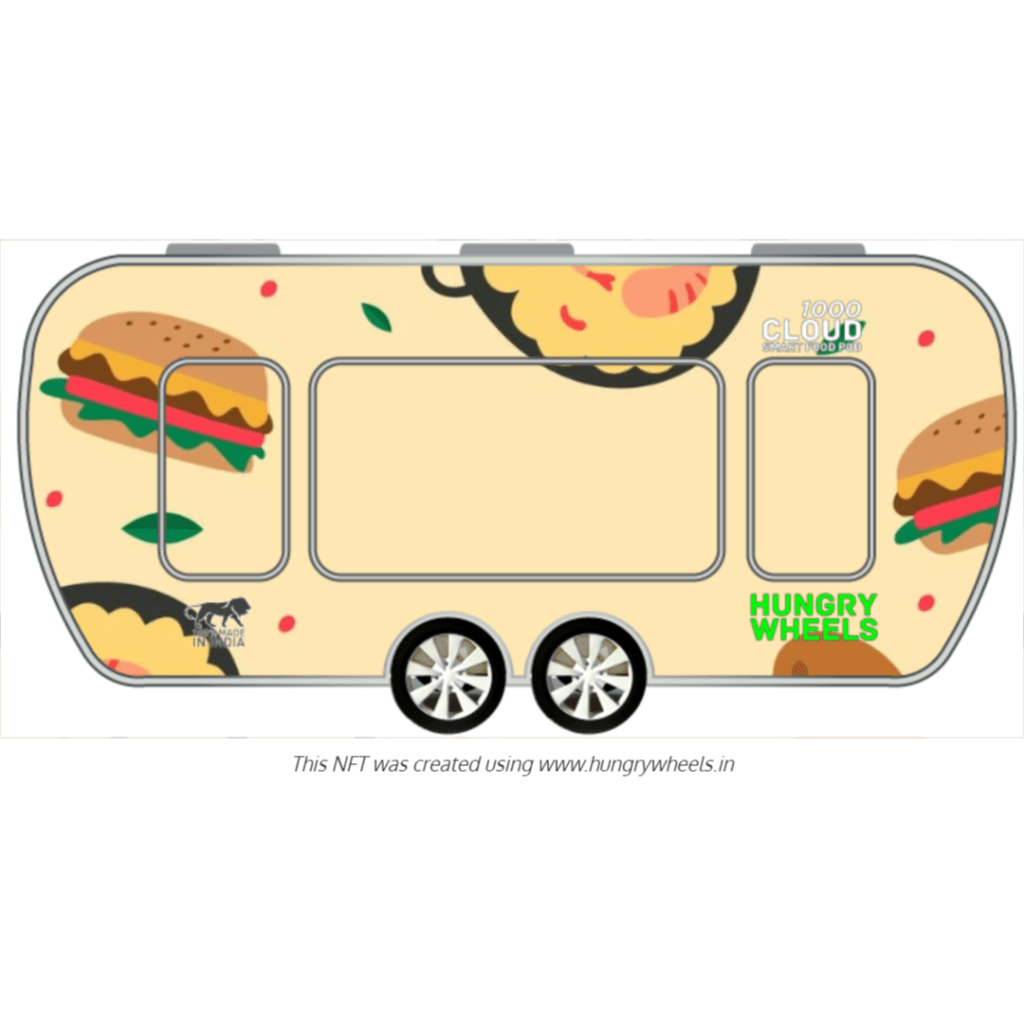The food industry is booming, and cloud kitchens are taking a big bite out of the market. These delivery-only kitchens offer a lower overhead model compared to traditional restaurants, making them an attractive option for aspiring foodpreneurs. But before you dive headfirst into building your dream cloud kitchen, there’s a hot new trend that might just be a better fit: food pod.
What is Cloud Kitchen
Cloud kitchens, also known as ghost kitchens or dark kitchens, are professional food preparation and cooking facilities set up for delivery-only meals. Unlike traditional restaurants, cloud kitchens operate without a physical storefront. Instead, they rely on online orders placed through food delivery platforms like Uber Eats, Zomato, or Swiggy. By eliminating the need for dine-in space, cloud kitchens offer significant cost savings on rent and overhead expenses, making them an attractive option for aspiring restaurateurs.
How to Start a Cloud Kitchen Business
Market Research:
Conduct thorough market research to identify popular cuisines, target demographics, and competitors in your area.
Business Plan:
Develop a comprehensive business plan outlining your concept, menu offerings, pricing strategy, and marketing approach.
Location:
Choose a strategic location with easy access to major delivery routes and a dense population base to maximize your reach.
Legalities:
Register your business, obtain necessary permits and licenses, and ensure compliance with health and safety regulations.
Kitchen Setup:
Design an efficient kitchen layout optimized for food production and delivery operations.
Menu Development:
Create a menu that aligns with your target market’s preferences while keeping food costs and preparation time in mind.
Technology Integration:
Invest in technology solutions such as POS systems, order management software, and delivery tracking platforms to streamline operations.
Marketing and Branding:
Develop a strong online presence through social media, food delivery apps, and digital marketing campaigns to attract customers.
Benefits of Cloud Kitchen
Cloud kitchens offer numerous benefits for entrepreneurs looking to enter the food industry. Here are some of the key advantages of starting a cloud kitchen business:
Lower Overhead Costs:
One of the most significant benefits of cloud kitchens is their ability to operate with lower overhead costs compared to traditional brick-and-mortar restaurants. Since cloud kitchens do not require a physical storefront in high-traffic areas, entrepreneurs can save on expenses such as rent, utilities, and maintenance.
Flexibility in Location:
Cloud kitchens can be set up in non-traditional locations, allowing entrepreneurs to choose areas with lower rent or higher demand for delivery services. This flexibility enables them to target specific neighborhoods or regions without being limited by geographical constraints.
Increased Efficiency:
Cloud kitchens are designed for maximum efficiency in food preparation and delivery. With a focus solely on fulfilling online orders, chefs can streamline operations and optimize kitchen layouts to minimize wait times and maximize output.
Access to Data and Analytics:
By partnering with food delivery platforms, cloud kitchens gain access to valuable data and analytics on customer preferences, order trends, and peak hours. This data can be used to fine-tune menu offerings, pricing strategies, and marketing efforts to better meet customer demands and drive sales.
Scalability and Expansion Opportunities:
Cloud kitchens offer scalability advantages, allowing entrepreneurs to easily expand their operations by launching additional kitchen locations or partnering with multiple delivery platforms. This scalability enables them to reach a wider audience and increase their revenue potential over time.
Reduced Risk:
Compared to traditional restaurants, cloud kitchens carry lower financial risk due to their lower upfront investment and operating costs. This makes them an attractive option for aspiring restaurateurs looking to test new concepts or enter competitive markets without committing to a long-term lease or significant capital expenditure.
Adaptability to Market Trends:
Cloud kitchens are well-suited to adapt to changing consumer preferences and market trends. With the ability to quickly adjust menu offerings, pricing, and marketing strategies, entrepreneurs can stay ahead of the competition and capitalize on emerging food trends to attract and retain customers.
Enhanced Brand Visibility:
Despite not having a physical storefront, cloud kitchens can leverage digital marketing channels and social media platforms to build brand awareness and engage with customers online. By creating a strong brand identity and delivering high-quality food and service, cloud kitchens can attract loyal customers and generate positive word-of-mouth recommendations.
Cloud Kitchens: Pros and Cons
Cloud kitchens offer a clear advantage: affordability. You ditch the expensive dine-in space and focus solely on the kitchen operations. This translates to lower rent, fewer staff for front-of-house service, and potentially less equipment. However, cloud kitchens lack the brand identity and customer connection that a physical location can provide. Marketing solely online can be challenging, and competition is fierce in the delivery app space.
Differences Between Food Pods and Cloud Kitchens
Physical Presence:
Unlike cloud kitchens, food pods are physical structures located in high-traffic areas such as shopping centers, office complexes, or outdoor markets. This allows for greater brand visibility and foot traffic, potentially increasing sales.
Customer Interaction:
Food pods provide an opportunity for face-to-face interaction with customers, fostering a sense of community and allowing for direct feedback and engagement.
Flexibility:
Food pods offer greater flexibility in terms of menu experimentation, seasonal offerings, and promotional events, enabling entrepreneurs to adapt quickly to changing consumer preferences.
Brand Building:
With a dedicated physical space, food pods offer a platform for brand building and storytelling, creating a unique experience that sets them apart from competitors.
So, Cloud Kitchen or Food Pod?
The answer depends on your goals and resources. Cloud kitchens are ideal for established brands looking to expand their delivery reach without a massive investment. Food pods are perfect for first-time restaurateurs who crave a vibrant atmosphere and direct customer interaction.
For those interested in exploring the food pod business model, Hungry Wheels offers comprehensive support and guidance. From finding the perfect location to designing and outfitting your food pod, Hungry Wheels is committed to helping entrepreneurs bring their culinary vision to life. Get in touch with Hungry Wheels today to embark on your journey towards food pod success.
In conclusion, while cloud kitchens offer a convenient and cost-effective way to enter the food delivery market, food pods present an alternative approach that prioritizes brand visibility, customer interaction, and flexibility. By weighing the pros and cons of each model and considering factors such as location, target market, and business goals, aspiring restaurateurs can make an informed decision that aligns with their vision and aspirations.
Mobility architect, system designer, and ecosystem builder
Since 2012, he has developed various scalable vehicle platforms and solutions for retail, logistics, and defense. As a possibilist, futurist, and innovator, Vikram’s designs have powered the success of Food POD mobile kitchens at ITC, TAJ Hotels, Qmin, Manipal Group, and more.





